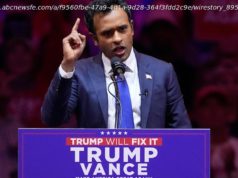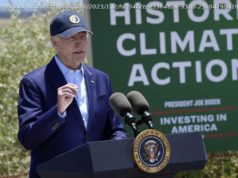The U. S. stepped up its demands on China, but after two days there remained no deal and no date set for further talks.
Senior Chinese and American officials concluded two days of negotiations on Friday with no deal and no date set for further talks, as the United States stepped up its demands for Chinese concessions to avert a potential trade war.
The American negotiating team, which included Treasury Secretary Steven Mnuchin and the United States trade representative, Robert E. Lighthizer, headed for the airport after the talks and did not release a statement. But a list of demands that the group took into the meeting called for reducing the United States‘ trade gap with China by $200 billion over the next two years and a halt on Chinese subsidies for advanced manufacturing sectors.
The demands, which spread on Chinese social media and were confirmed by a person close to the negotiations, suggested that both sides hardened their positions this week despite the two days of talks. Senior Chinese officials and their advisers were also sending a deliberate message to the West that the days of Beijing being conciliatory were over, and that China was staking out its own position in the negotiations.
Read more from the New York Times: How Trump’s lawyer built a business empire in the shadows Patagonia v. Trump The baby-formula crime ring
The person close to the negotiations insisted on anonymity because of diplomatic sensitivities.
The extensive list of United States trade demands was unexpectedly sweeping, and showed that the Trump administration has no intention of backing down despite Beijing’s assertive stance in the last few days. „The list reads like the terms for a surrender rather than a basis for negotiation,“ said Eswar Prasad, an economics professor at Cornell University.
Here are the highlights of the demands:
China must…
The United States also stipulated that the two sides should meet every quarter to review progress.
Chinese officials put the talks in a positive light. „The two sides agreed that a sound and stable China-U. S. trade relationship is crucial for both, and they are committed to resolving relevant economic and trade issues through dialogue and consultation,“ Xinhua, the official news agency, said soon after the talks ended.
But the negotiations also highlighted key differences — and the American delegation’s tight-lipped departure from Diaoyutai, the parklike enclosure of guesthouses where the talks were held, suggested that the two sides had made little headway in solving them.
Before the trade talks began, people involved in China’s policymaking said, Beijing was willing to act on some concessions previously laid out by President Xi Jinping. Among the most notable was a willingness to make it slightly easier for foreign automakers and financial services companies to compete in China.
But China has its own demands. Beijing wants the United States to relax restrictions on exports of high-tech commercial products that may have military applications. During the trade talks here this week, Chinese officials also took issue with the penalties that American officials imposed last month on ZTE, a Chinese telecommunications company, for repeatedly violating United States sanctions on Iran.
The Commerce Department banned all shipments of American wares to ZTE, including chips and other equipment that are essential to many of the company’s products. The move appears to have strengthened China’s resolve to continue its drive for self-sufficiency and to curb imports in various high-tech fields.
China’s push to upgrade its technology accounts for many of its disagreements with the United States. The American document reiterated Trump administration calls for a broad halt of Chinese subsidies to manufacturers in advanced technology industries. And Chinese officials have defended the Made in 2025 program as essential to upgrading the economy and have said they would not agree to any limits on the Made in China program.
Beijing has said it would be willing to reduce some trade barriers, but only if the United States also lowered trade barriers. Chinese officials particularly object to American limits on the export of high-tech goods that have both civilian and military applications, contending that these restrictions prevent sizable potential exports.
They also objected to United States demands for a specific cut in the bilateral surplus. Li Gang, the vice president of the Commerce Ministry’s research and training institute, said in a separate interview last month that a $100 billion cut in the surplus was „impossible.“ China’s surplus has been widening lately as the United States economy grows fairly strongly and takes in more imports.
The Commerce Department announced on Thursday in Washington that the trade imbalance with China had widened slightly in March compared with the same month a year ago, although it narrowed slightly compared with February, possibly for seasonal reasons.
The lack of a deal this week, as well as the failure to schedule further talks right away, does not rule out the possibility that Chinese negotiators will visit the United States next month for further talks. One possibility that American officials have considered is whether China might send Vice President Wang Qishan, who is close to Mr. Xi, on a follow-up trip.
So far, the Chinese side has been led by Liu He, a Politburo member who is also the vice premier for finance, trade and technology.
Trade experts have been saying for weeks that Chinese officials would like to resolve the dispute with the United States so that they can go back to focusing on issues closer to home.
„That’s the immediate problem, because it’s a headache for them that’s distracting from a very pressing domestic agenda,“ said Christopher K. Johnson, a former C. I. A. officer who analyzed China and now holds the Freeman Chair in China Studies at the Center for Strategic and International Studies.
The Beijing talks were unlikely to result in a comprehensive deal, but experts said they could still be a first step toward reaching some sort of accord.
Start
United States
USA — Financial US-China trade talks end with strong demands, but few signs of a...






